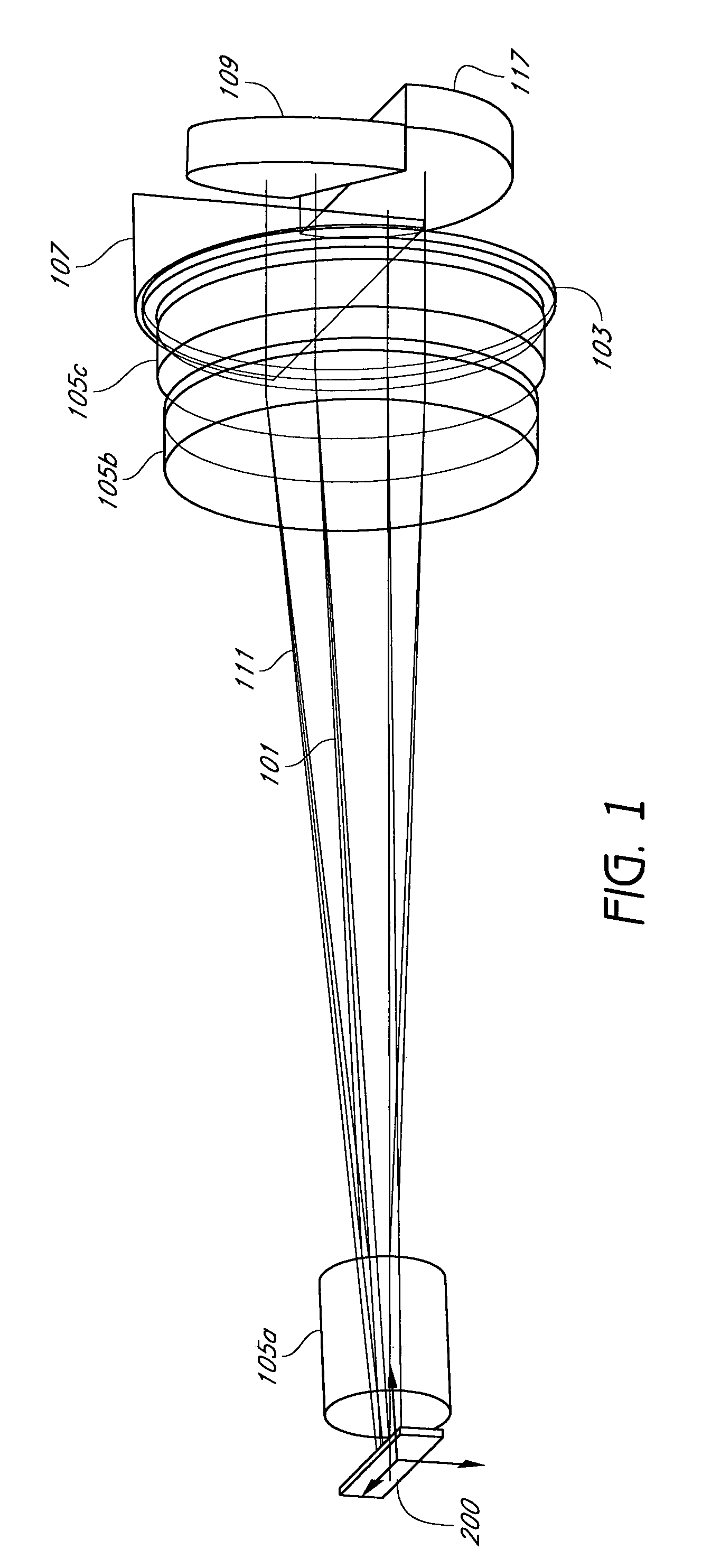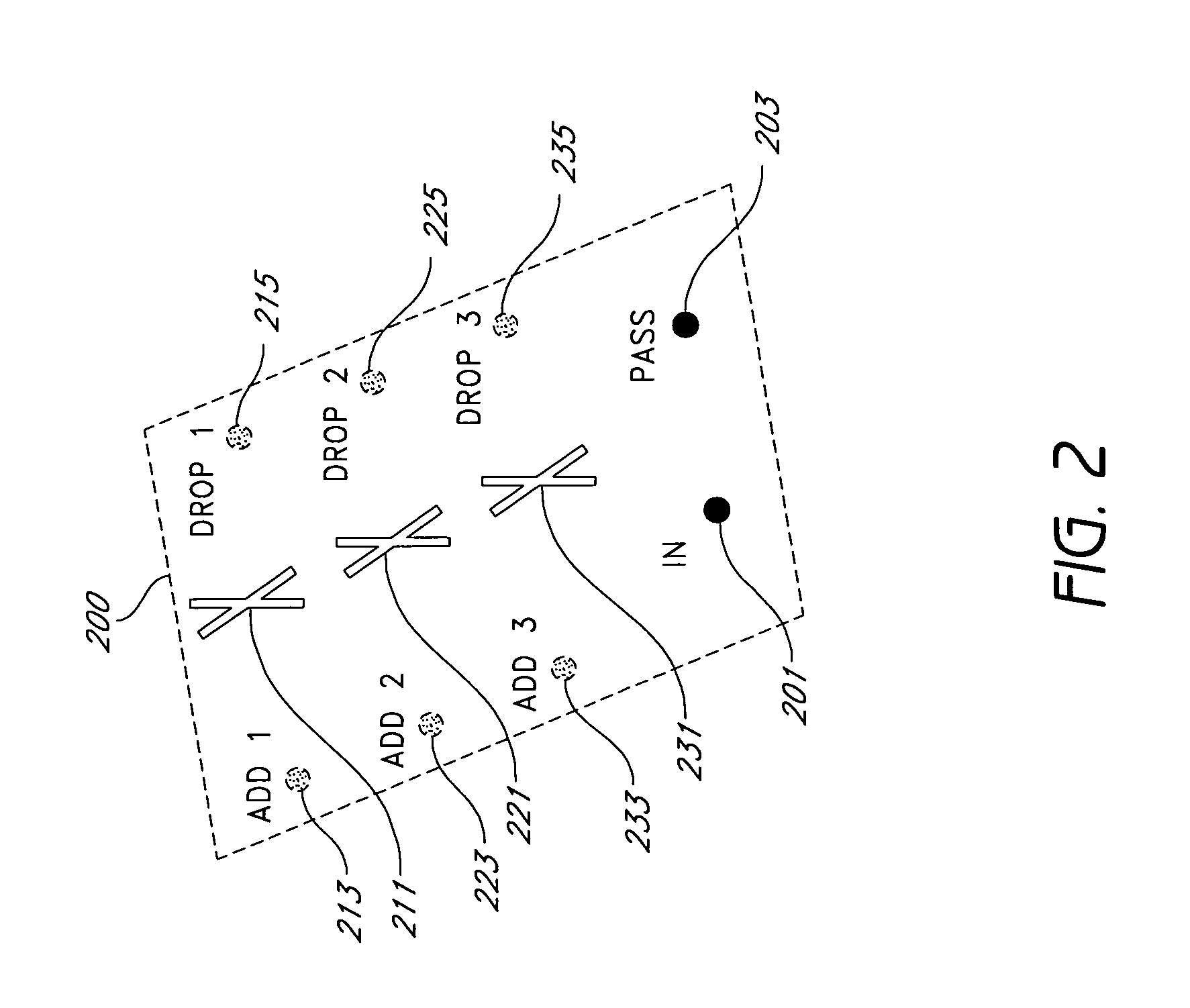Littrow grating based OADM
- Summary
- Abstract
- Description
- Claims
- Application Information
AI Technical Summary
Benefits of technology
Problems solved by technology
Method used
Image
Examples
Embodiment Construction
[0028]The Littrow grating based OADM of the invention has numerous applications, including use in fiber optic telecommunications systems. For purposes of illustration, the preferred embodiments described below in detail multiplexing and demultiplexing, and adding and dropping channels, in wavelength division multiplexing and demultiplexing for a multi-channel fiber optic telecommunication systems. Exemplary references to an optical channel, or simply to a channel, should be understood to mean an optical signal with a centered wavelength and an upper and lower wavelength. Channel spacing is measured from the center of the first channel to the center of an adjacent channel.
[0029]A three channel Littrow grating based OADM, employing one embodiment of the invention, is detailed in FIG. 1. It is of note that while only three channels are used in this example, a substantially larger number of channels / ports may be employed. The Littrow grating based OADM allows for demultiplexing and mult...
PUM
 Login to View More
Login to View More Abstract
Description
Claims
Application Information
 Login to View More
Login to View More - R&D Engineer
- R&D Manager
- IP Professional
- Industry Leading Data Capabilities
- Powerful AI technology
- Patent DNA Extraction
Browse by: Latest US Patents, China's latest patents, Technical Efficacy Thesaurus, Application Domain, Technology Topic, Popular Technical Reports.
© 2024 PatSnap. All rights reserved.Legal|Privacy policy|Modern Slavery Act Transparency Statement|Sitemap|About US| Contact US: help@patsnap.com










